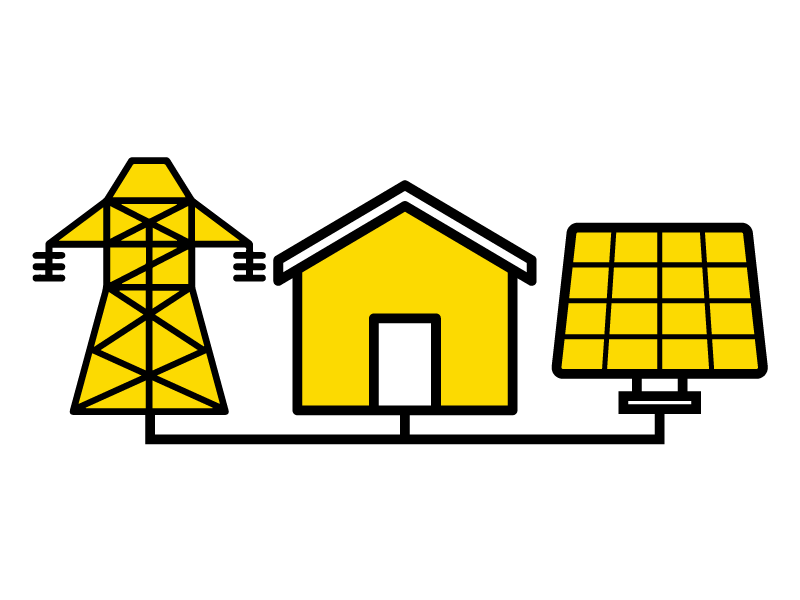
These systems do not require battery storage and are connected to the public electricity grid. Once the energy needs of the household or business are covered, any excess solar power generated is exported to the electricity grid that the household is connected to and the owner receives credit based on the exported amount of energy. This credit can then be redeemed when the photovoltaic system does not produce enough energy to cover the household’s or business’ needs and power from the electricity grid must be imported.
Net Metering is the method via which the energy that is exchanged between the privately owned solar system and the public grid is calculated. On occasions where the household’s energy needs are higher than the energy produced by the solar system, then the consumer is being charged for the electrical power drawn by the public grid. In the opposite situation, where the privately owned solar system produces more energy than the household needs, then the excessive energy is being sent to the public grid and the owner receives credits that he can redeem in times of need.
These policies allow solar system owners to avoid electricity costs and guarantee that their energy needs are met throughout the year. We offer net metering capabilities for single-phase residential use from 2kW up to 4kW and three-phase from 4kW up to 10kW. The system is connected to EAC’s power grid. As explained above, energy produced by the solar system is firstly used to cover the household’s needs. Excess energy is channeled to the public grid for storage or other use. If the system doesn’t produce enough energy to cover the household’s needs, then energy from the public grid will be imported and the household will be charged accordingly, unless kWh credits from previous months are available. Any excess energy credits stored in the system should be consumed up until April the following year. Otherwise they are lost since the balance is zeroed and starts anew.


It is an alternative approach to Net Metering. Like Net Metering, consumers are able to avoid retail electricity prices, but the main difference is the rates used to value the excess energy fed into the public grid and the energy drawn from the grid in times of need. It applies to industrial businesses that have high energy demands. We offer net billing capabilities from 10kW up to 10mW as well as Hybrid capabilities, i.e. net billing with battery storage.
Net billing is designed to offer an additional motive to medium and high electricity consumers who wish to reduce their energy costs and even make a profit in the long run. Therefore, the energy produced by the solar system should be optimized and designed to perfection in order for the owners to gain the best benefits. We are here to do that for you!
Hybrid Systems are connected both to the electricity grid and have storage capacity via batteries. In this case, once the household’s or business’ energy needs are met, the excess power is sent first to the batteries for storage and then, once the batteries are full, to the electricity grid for credits.

"*" indicates required fields